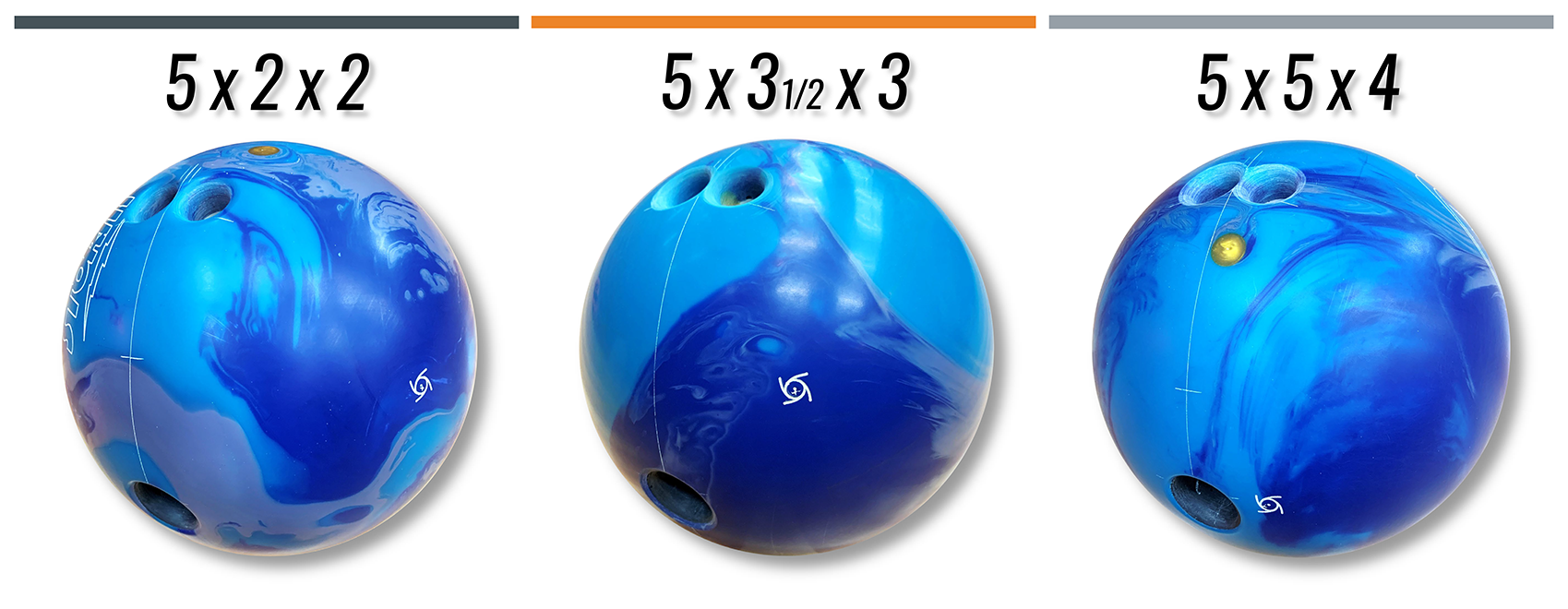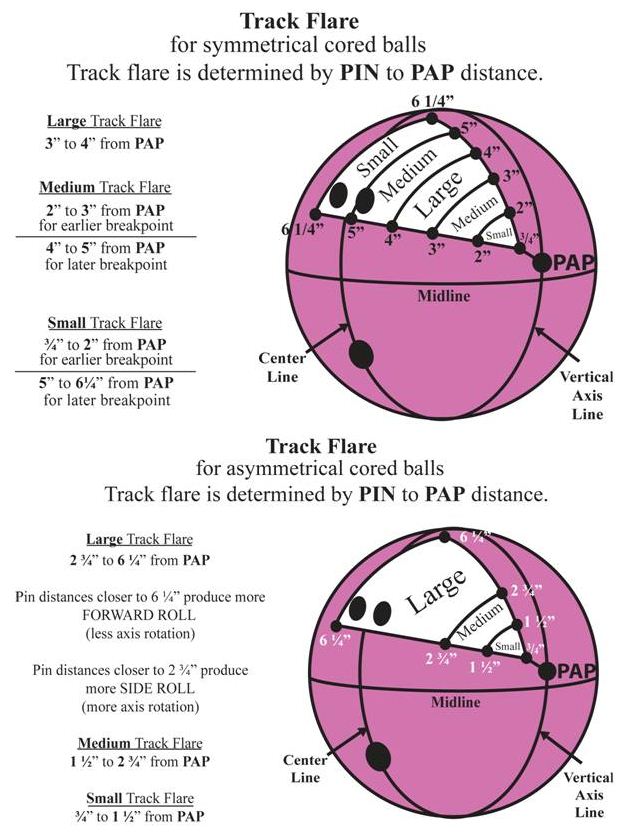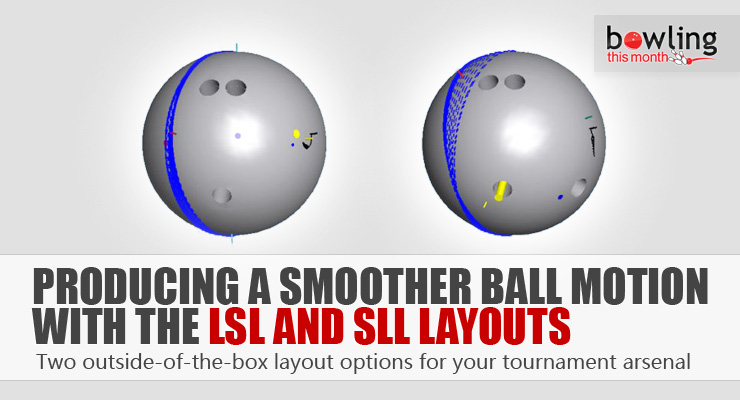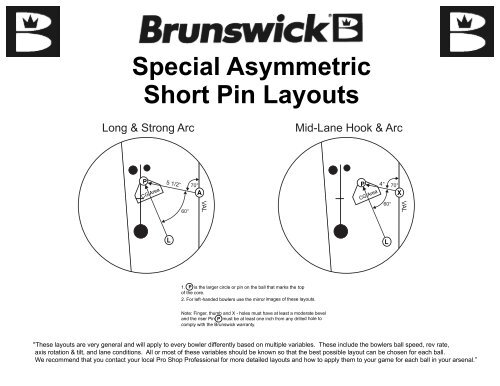Short Pin Bowling Ball Layouts
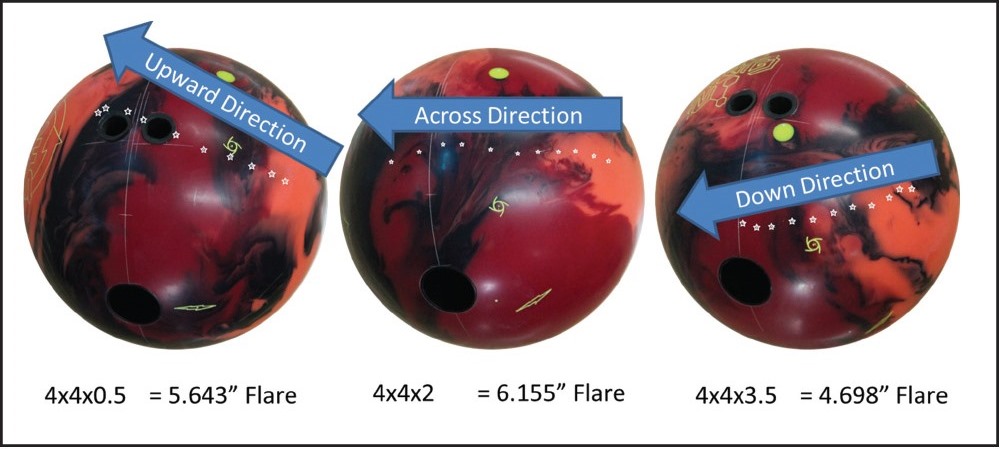
The pap is the reference point for ball layouts.
Short pin bowling ball layouts. On a symmetrical ball the center of gravity cg should be in line with the pin angling toward your thumb. Short pin layouts require longer psa to pap distances. The more the ball flares the more fresh parts of the surface contacts the lane and the more the ball ultimately hooks. This helps the ball be extremely stable with the short pin but not want to lose all energy before entering the pins.
The pin location has the biggest effect on the balls reaction and core location. And a pin under drilling in most cases for most bowlers is going to roll earlier than a pin over drilling. The pin to pap distance pin length dictates how much flare potential the ball will have as it travels down the lane. Draw a line on the ball from the center of the thumb hole through the pin.
Place a piece of white tape on that spot. Knowing how to lay out your bowling balls can help you gain an edge over your competition. The layout of course defines how the core is oriented inside the ball relative to the bowler s pap and relative to the gripping holes. The layout when the ball is drilled put the pin 4 5 inches from your positive axis point pap or under your ring finger.
Extend the line 10 past the pin to the bottom of the ball and mark that spot that is 10 from the pin. That is the intended location for the balance hole. Pin to pap distance is one element of a bowling ball s layout. You could take a short pin ball and drill it with the tommy jones layout and it would probably still react like a jones ball but it would also likely be statically illegal unless it had a really low top.
On an asymmetrical ball the mass bias should be in line with the pin and directly underneath your thumb. So if you had two identical bowling balls one with a 2 pin and one with a 4 pin and you put both pins in the same location then the only thing you have to worry about is the final destination of the cg and how much weight it carries.




